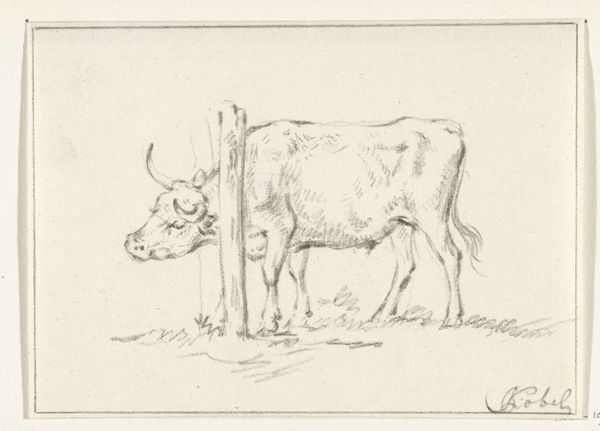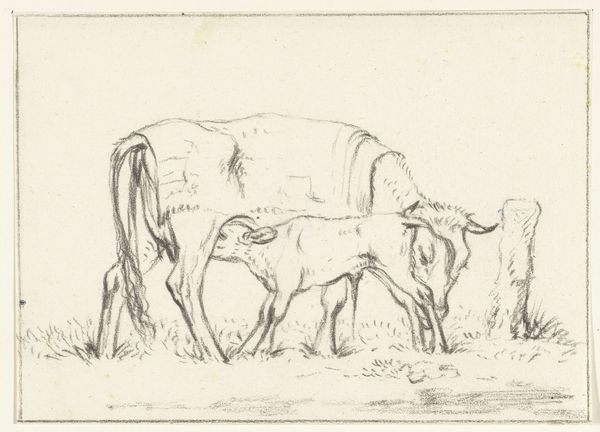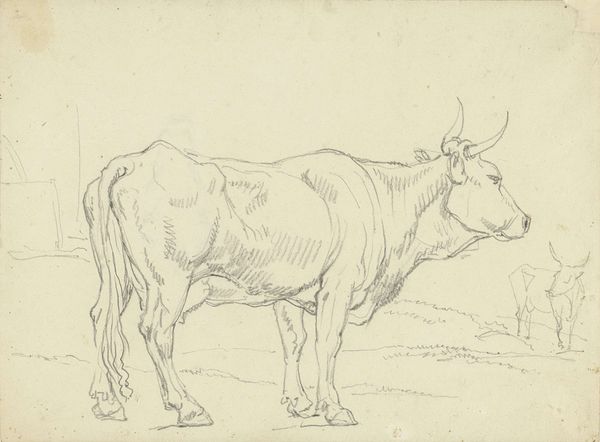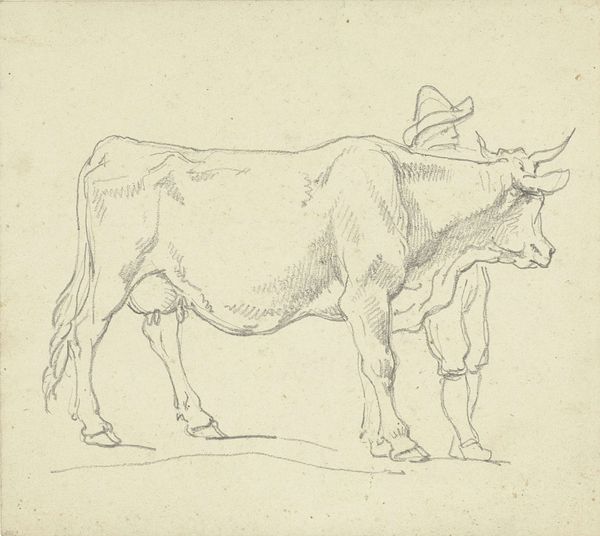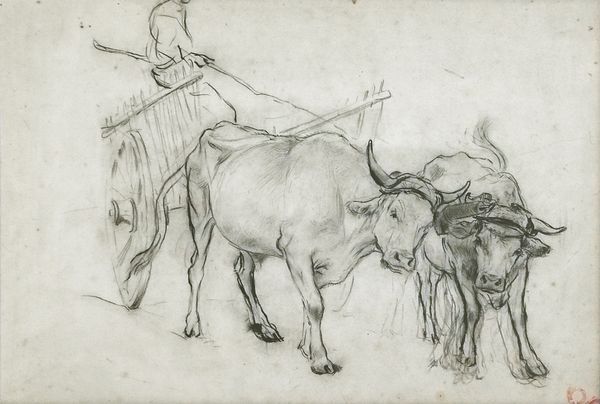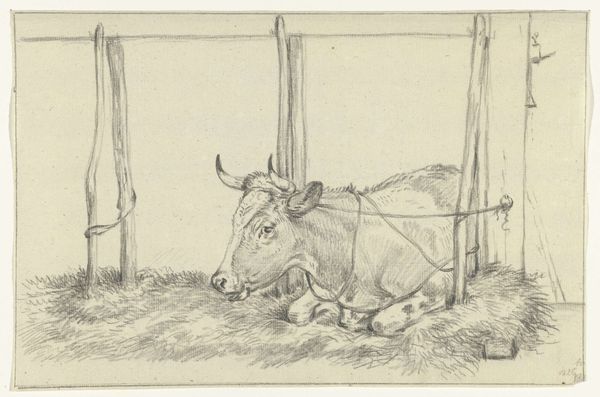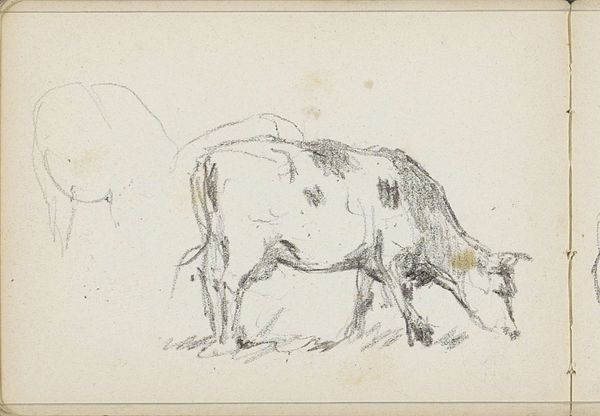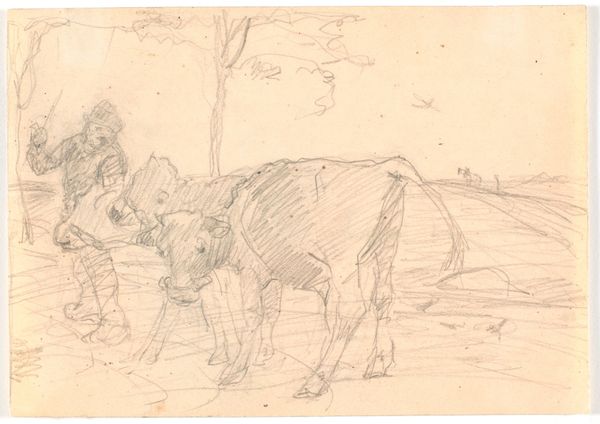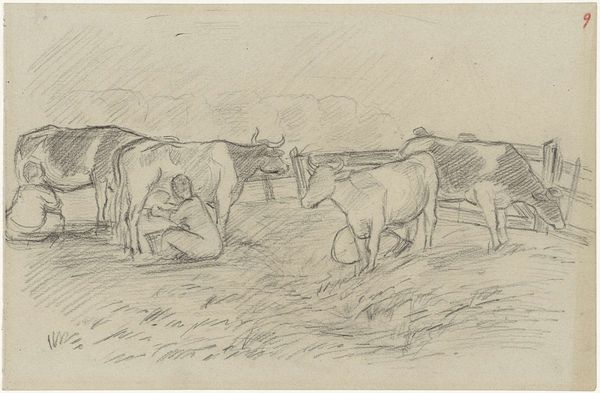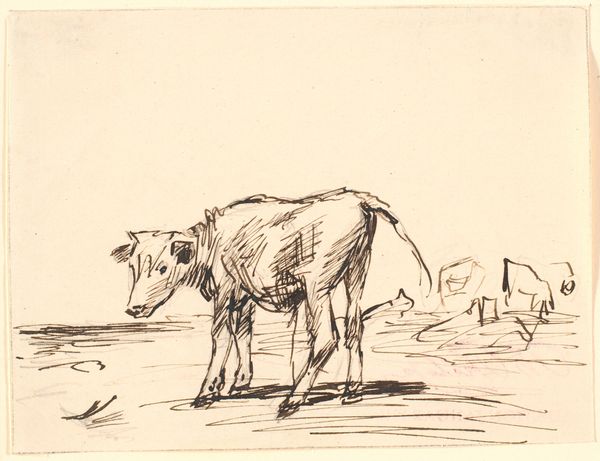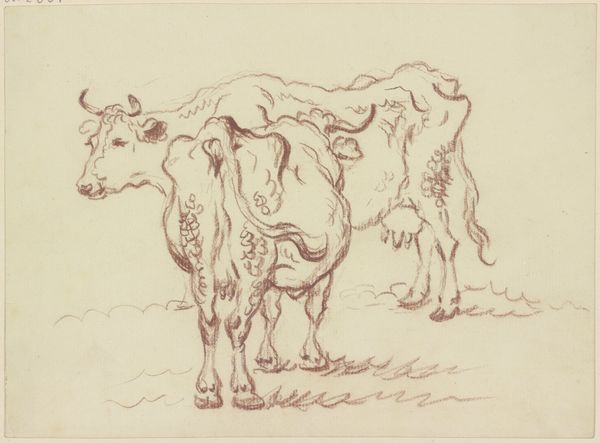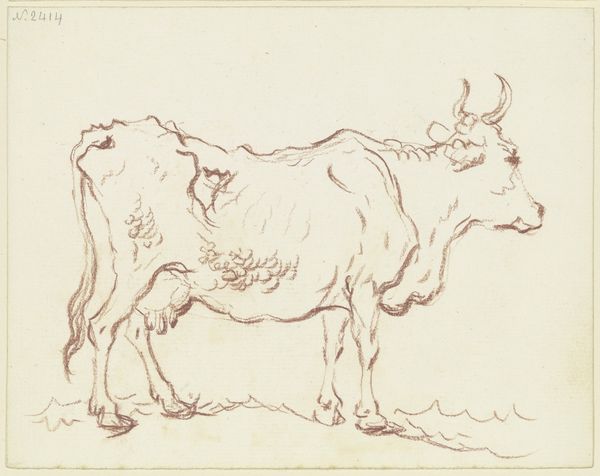
drawing, ink
#
drawing
#
pen illustration
#
pen sketch
#
landscape
#
form
#
personal sketchbook
#
linework heavy
#
ink
#
ink drawing experimentation
#
pen-ink sketch
#
line
#
pen work
#
sketchbook drawing
#
storyboard and sketchbook work
#
sketchbook art
#
realism
Dimensions: height 127 mm, width 183 mm
Copyright: Rijks Museum: Open Domain
Jan Kobell the Younger made this pen drawing of oxen pulling a wagon in the late eighteenth or early nineteenth century. The scene depicts working animals, a common subject in Dutch art reflecting the importance of agriculture and trade in the Netherlands. Drawings like this served various purposes. They could be studies for larger paintings, independent works of art for sale, or records of daily life. Kobell, coming from a family of artists, would have been trained in the conventions of landscape and animal representation then favored by the art market. The drawing invites questions about social class and labor. Who owned these animals and the goods they transported? How did the artist view the relationship between humans and animals? By studying the economic history of the Netherlands, and the institutional history of its art market, we can begin to understand the values that underpinned Dutch society. Ultimately, it reminds us that art always speaks from a particular point of view, shaped by social and institutional forces.
Comments
No comments
Be the first to comment and join the conversation on the ultimate creative platform.
